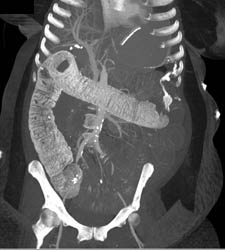

When it comes to the latter, learn how DNA health testing could reveal whether you’re genetically predisposed to this kind of gluten intolerance. Various diseases can lead to problems in our intestines-from IBD and colon cancer to celiac disease. The serosa forms a smooth, slimy outer layer so that the intestines do not become inflamed from contact with other organs or muscles during digestion and movement of the body. The outermost layer of the intestines is the serosa, which is made of simple squamous epithelium. Intestinal movements such as peristalsis and segmentation help to move food through the intestine and churn the food so that it has contact with the intestinal walls. The muscularis layer surrounds the submucosa and provides several layers of smooth muscle tissue to move the intestines. In the small intestine, many tiny folds called villi increase the surface area of the mucosa so that the contact between food and mucosa is greatly increased, subsequently allowing more nutrients to be absorbed by the intestines.ĭeep to the mucosa is the submucosa layer that contains many blood vessels, nerves, and connective tissues that support the mucosa. The epithelial cells of the mucosa absorb the nutrients and water from digested food and transfer these substances to blood in nearby capillaries. Mucus produced by the mucosa lubricates the interior of the intestines to prevent friction from food passing through the lumen, or hollow portion of the intestine. Mucosa is made of epithelial tissue containing mucus-secreting goblet cells. The innermost layer of the intestines is the mucosa. During defecation, the anal sphincter muscles of the anal canal relax to allow feces to exit the body.The rectum stores feces until they are ready to be defecated (eliminated from the body).Next, the descending colon carries the feces inferiorly to the S-shaped sigmoid colon and rectum. The transverse colon then carries feces transversely from the right side of the abdomen to the left side, where it enters the descending colon. The ascending colon carries feces superiorly from the cecum to the transverse colon. Fecal matter passes from the cecum into the colon, the largest region of the large intestine.The appendix is attached to the inferior end of the cecum and is believed to store beneficial bacteria that help break down undigested food. Fecal matter entering the large intestine from the ileum passes into the cecum before being pushed superiorly into the ascending colon. The cecum is a pouch-like dead-end passage that branches inferiorly from the end of the ileum.Our large intestine consists of 4 major regions: the cecum, colon, rectum, and anal canal. These intestinal walls also absorb vitamins released from the fermentation of feces by bacteria living in the large intestine. The smooth walls of the large intestine absorb water from fecal matter. It receives fecal matter from the small intestine through the ileocecal sphincter. The large intestine is about 2.5 inches in diameter and about 5 feet long in a living body. Any last nutrients that were not absorbed in the jejunum are absorbed in the ileum before the food passes into the large intestine. Finally, food passes into the ileum, the longest region of the small intestine.Food next passes into the jejunum, a longer region of intestine where the bulk of the absorption of nutrients takes place.The duodenum begins to absorb nutrients from the food passing through its lumen. These substances mix in the duodenum to further digest food into its most basic units. The duodenum receives partially digested food from the stomach, bile from the liver and gallbladder, and pancreatic juice from the pancreas.It extends from the stomach to the large intestine and consists of 3 major regions: the duodenum, jejunum, and ileum. The small intestine is about 1 inch in diameter and about 10 feet long in a living body. Blood vessels of the mesentery carry oxygenated blood to support the tissues of the intestines and carry nutrient-rich venous blood away from the intestines to feed the tissues of the body. They are connected to the posterior wall of the abdomen by the mesentery, a thin vascular membrane. The intestines are located inferior to the stomach in the abdominal body cavity.


 0 kommentar(er)
0 kommentar(er)
